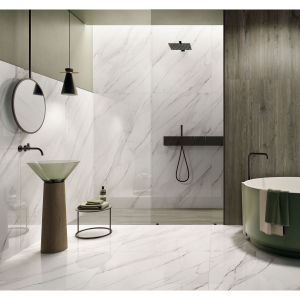Do Kitchen and Bathroom Tiles Need to Match? Exploring Design
The Dilemma: Matching Kitchen and Bathroom Tiles
When it comes to home design, one common question that homeowners often grapple with is whether kitchen and bathroom tiles should match. The choice of tiles plays a crucial role in defining the aesthetics of these spaces, but does uniformity always reign supreme? Let’s delve into the intricacies of this design dilemma.
Harmony in Design
Creating a harmonious design throughout your home is undoubtedly a goal for many homeowners. Matching tiles between the kitchen and bathroom can contribute to a sense of continuity, providing a cohesive look that ties the different areas of the house together. This approach can be especially effective in open floor plans where spaces seamlessly flow into one another.

One way to achieve harmony is by selecting a common color palette for both the kitchen and bathroom tiles. This doesn’t mean the tiles need to be identical, but having a consistent color scheme can create a visually pleasing connection between the two spaces.
Divergence for Distinctive Spaces
While harmony is desirable, some homeowners prefer to differentiate the kitchen and bathroom through distinct tile choices. This approach allows each space to have its own unique personality and style. Divergent tile selections can be an effective way to showcase the individuality of each room, catering to specific functional and aesthetic needs.
Consider using different tile patterns, textures, or materials in the kitchen and bathroom. For example, a sleek subway tile in the kitchen may contrast beautifully with a patterned ceramic tile in the bathroom. This intentional departure from uniformity can result in a visually stimulating and dynamic home design.
Practical Considerations
While the aesthetic aspect is essential, practical considerations also play a significant role in the decision-making process. Kitchens and bathrooms have distinct requirements in terms of durability, water resistance, and maintenance.
Kitchen Tiles: In the kitchen, where spills and splashes are common, it’s crucial to choose tiles that are easy to clean and resistant to stains. Porcelain or ceramic tiles with a glazed finish are popular choices for kitchen floors and backsplashes, providing both style and practicality.
Bathroom Tiles: Bathrooms, on the other hand, require tiles that can withstand moisture and humidity. Porcelain tiles are an excellent option for bathroom floors and walls due to their water-resistant nature. Additionally, textured tiles can be chosen for flooring to prevent slipping.
Creating Visual Flow
If the idea of completely different tiles in the kitchen and bathroom feels too jarring, you can aim for a compromise by creating a visual flow between the spaces. This can be achieved through transitional elements such as color accents, shared patterns, or complementary tile shapes. Finding a middle ground allows you to strike a balance between uniformity and individuality.

Conclusion: Balancing Act
In the end, the decision of whether kitchen and bathroom tiles should match depends on your personal preferences, the overall design goals, and practical considerations. Whether you choose a harmonious approach for a seamless look or opt for divergence to highlight the unique characteristics of each space, striking the right balance is key.
Consider consulting with a design professional to explore various options and find a solution that aligns with your vision for a stylish and functional home.


I am really impressed with your writing skills as neatly as with the structure for your weblog. Is that this a paid subject or did you customize it your self? Anyway stay up the excellent quality writing, it is rare to look a great weblog like this one nowadays!
Just here to dive into discussions, share thoughts, and learn something new as I go.
I’m interested in hearing diverse viewpoints and adding to the conversation when possible. Happy to hear new ideas and meeting like-minded people.
That’s my website-AutoMisto24
https://automisto24.com.ua/